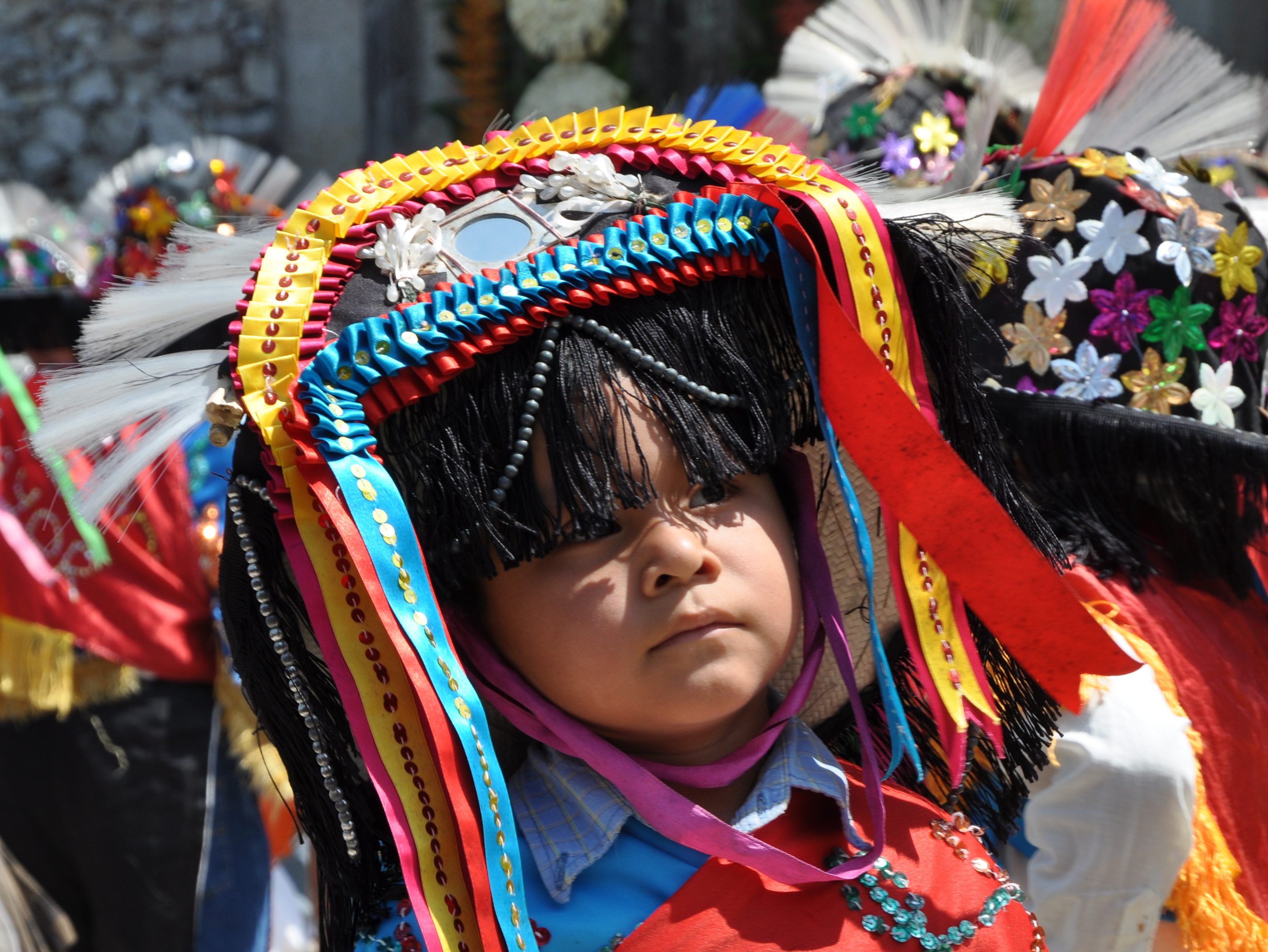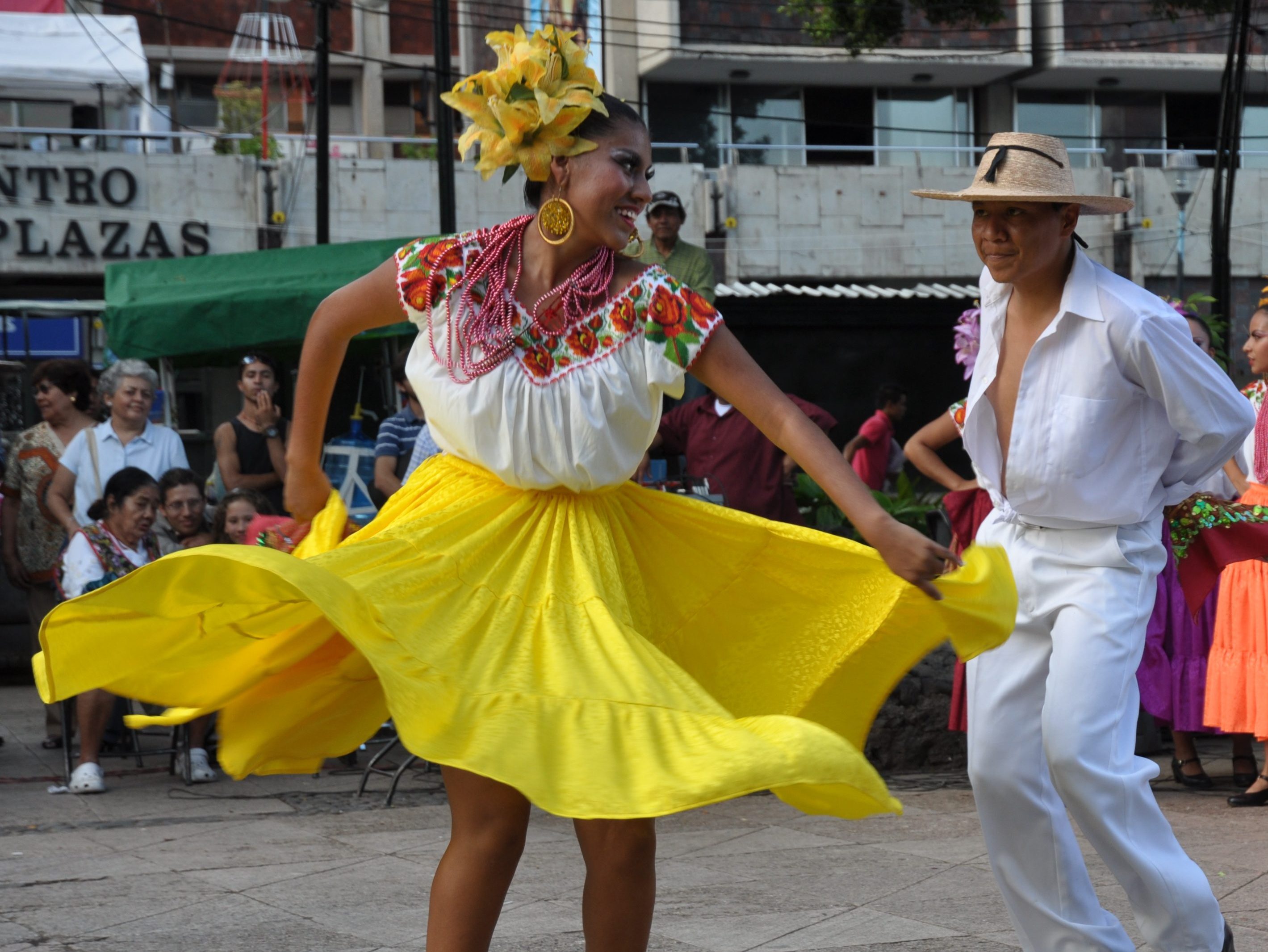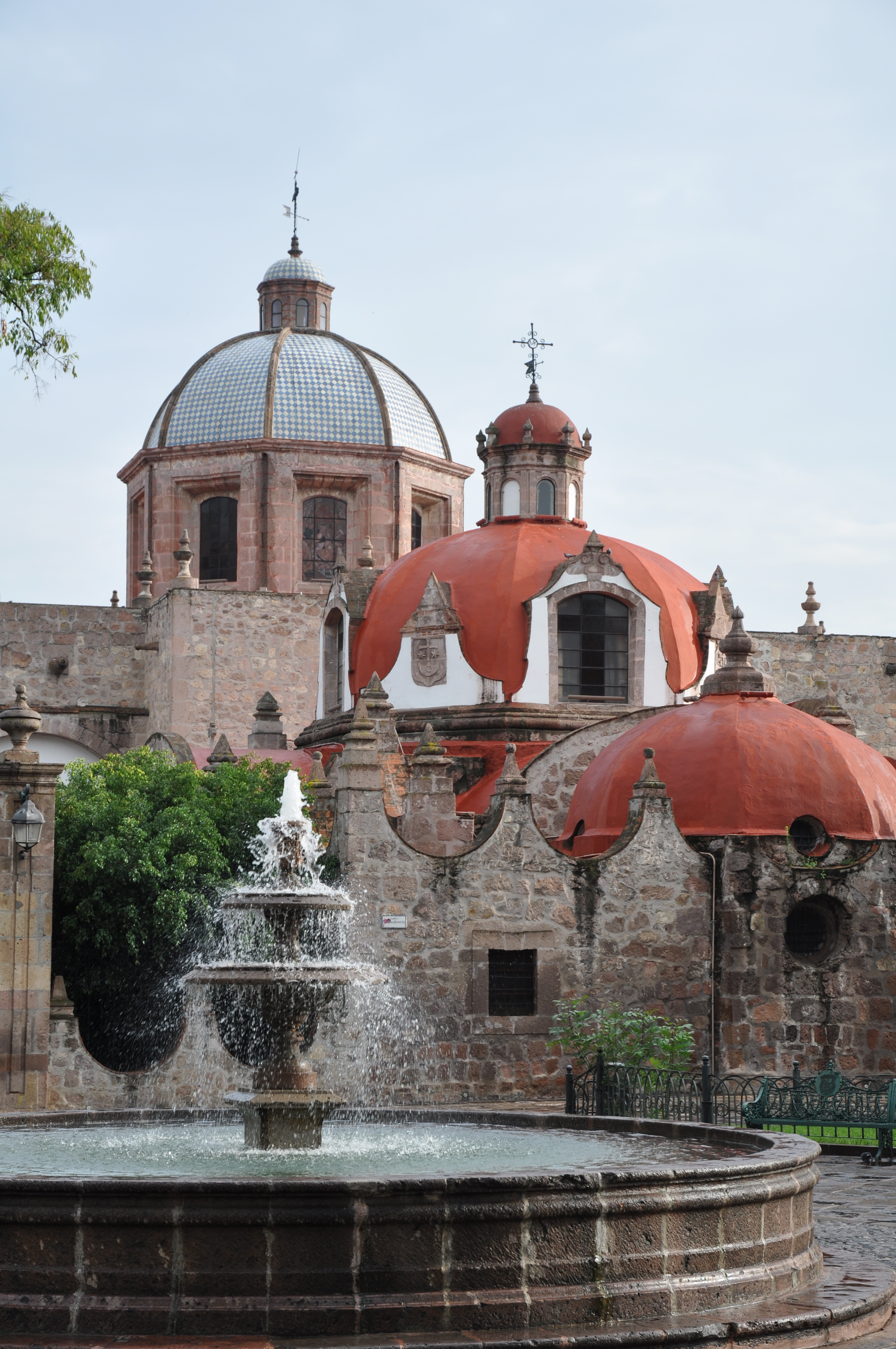
Go Mexico: Last year RÓISÍN SORAHAN wrote about leaving her good job and comfortable life to travel through Central and South America. Moving north, to Mexico, she found a fiesta-filled country that puts its best foot forward.
MEXICO LOVES to party. Any excuse and it’s off: no snobbery, social nuances or age restrictions. Everyone is invited.
I set off for the hills to a small town called Capulalpam. My partner and I planned to spend a night there, do a little hiking and visit the local traditional medicine centre. Three nights later and we were loath to leave. I have never come across a village quite like it. It calls itself the pueblo mágico, and, sure enough, there is magic in the air.
This tiny town sways to music. As the sun rises, loudspeakers that tower above the municipal building pour music across the hills. Every home in the village is drenched by the sound. The airs vary from salsa rhythms to religious music and back to mariachi swing.

My feet were fairly dancing as I stepped across the flagstones and pulled myself up the hills to a restaurant that served bowls of steaming hot chocolate made with cacao nuts, cinnamon, sugar and almonds.
The town’s music was interrupted by announcements at odd times throughout the day. I could understand only bits and pieces, but most of what I heard had to do with a fiesta that kicked off that day and would run for three days and three nights in honour of St Mateo, the town’s patron saint.
The people had been working feverishly for the fiesta. We stayed in a guest house atop a hill where the señora and her daughters had spent days baking bread and stirring huge cauldrons of mole – a thick, rich, chocolate-based chilli sauce that would be mixed with chicken, wrapped up in tortillas and served to friends, family and stragglers throughout the three-day party.
Everyone we met on the street took the time to greet us, and paused long enough to see if we liked their town and if we would be staying for the fiesta. One woman assured me: “Everyone’s welcome. We don’t care here if they are black, white or yellow!”
During my visit to Capulalpam I trekked in the forests and hunted for mushrooms that have more colours than I have names for. I also had a limpia, an “energy cleansing” ritual conducted by a herbal medicine woman. She brought me into a room where she selected a handful of herbs. Then she filled her mouth with alcohol and spat it on my arms, stomach and back. Afterwards she wiped me down with the herbs and had me blow three times on an egg, which she cracked and placed in a cup of water. She asked me to close my eyes, so she could “cleanse my aura” with the herbs. Then she put them on the floor so I could wipe my feet on them. The bad energy in my body had now moved to the egg, she said.
In other villages I watched cleansings taking place in churches where Mayan and Catholic traditions have merged. Shamans perform these rituals using live chickens to “take on” the negative energies. The bird is sacrificed at the end of the ceremony.
My somewhat tamer experience in the traditional medicine centre was topped off by a temazcal, or sweat bath. We went into a brick room each armed with a handful of stalks. As the fire heated the room – the medicine woman had been stoking the fire long before our arrival – we swatted ourselves and each other and sweated profusely for about 30 minutes. Afterwards we wrapped up in sheets and let our medicine mama tuck us up in bed under a nest of blankets. She came back with sweet herbal tea and instructed us to rest. We drifted off to sleep, drying off and cooling down under the blankets. We just about managed to rouse ourselves with the promise of a bowl of hot chocolate up the hill.
By noon on Saturday the loudspeakers had been turned down and the music was replaced by the sound of the local children’s big band warming up for the parade. We had heard them practise the night before as we wandered past the school. One of the mothers noticed our interest, ran after us and invited us to stay and enjoy the music.
The children’s parade, which marked the start of the festivities, left from the church in the early evening. From what I could tell just about every family in the village was represented. They followed a float bearing a figure of St Mateo, and everyone carried baskets of flowers, huge coloured balls that danced aloft on sticks and papier-mache figures that had been made in classrooms, kitchens and outhouses the length and breadth of the countryside.
The parade snaked through every street in the village until it came to rest in front of the municipal building, where the artistry was judged and prizes awarded. Afterwards, sleepyheads were carried home and the adults came out to play.

Throughout our travels in Mexico I stumbled on a number of fiestas, whose purposes ranged from honouring patron saints to marking the start of the coffee harvest and ringing the bells to celebrate, once again, the country’s proud independence.
I also came across ancient rituals openly practised in candle-lit corners. I visited a town renowned for its annual witches’ gathering. Old wisdom that had been handed down through generations sat side by side with modern practices. I met people who respected plants and trees not only for their beauty but also for their healing functions. I drank in juice bars where two menus lined the wall – the fruity version and the healing version, catering for everything from sinus problems to gout and infertility.
What struck me most in Mexico, however, was the country’s capacity to shrug off its worries about its teetering economy and shattered reputation. It is a lesson in presenting your best face and ensuring there’s a fancy frock in the wardrobe even if the day clothes are in tatters.
Mexico wears a smile. And it means it. No matter what time of the year you visit, a party is sure to be starting. The sun will warm your days, your nights will be filled with fireworks and stars, and there will be magic in the air.
Go there
British Airways (ba.com) flies to Mexico City via London Heathrow, Air France (airfrance.ie) flies via Paris Charles de Gaulle, Continental (continental.ie) flies via Newark and KLM (klm.ie) flies via Amsterdam. Mexicana (mexicana.com) and Aeroméxico (aeromexico.com) fly within Mexico.
Yum: salsa with everything
Make it social You eat Mexican food slowly and with relish, downing it with conversation and beer. Food is celebrated, feasted on and revelled over. It is an inherent part of the Mexican psyche, perhaps even rivalling the Italians for their love of the family dinner gathering, which is always large enough to accommodate every distant relative – no matter how small the table.
Spice it up Salsa is at soul of every Mexican meal. Chilli peppers, of varying degrees of hotness, are mixed in myriad ways. To the Irish tongue they’re all roaring.
Quesadillas Folded tortillas wrapped around cheese and placed on the griddle are perfect for breakfast or lunch or as a snack at any time of the day. More exciting versions can include anything from mushrooms to beans – served, of course, with a little salsa.
Tortas Baguette is crusty on the outside and light on the inside, so it’s perfect for soaking up that guacamole mix and spicy salsa dressing that drenches chunks of your favourite meat filling.
Tostadas A basket made from baked or fried tortillas is filled with a pile of toppings. My favourites include chicken, lettuce, beetroot, shaved carrot and, you’ve guessed it, salsa.
Coffee There’s no good reason to drink a bad cup of coffee in Mexico. Step away from the jar of Nescafé and get a whiff of those gorgeous Chiapas beans.
Chocolate It’s the real deal in Mexico. Cacao nut, laced with sugar, rich with cinnamon and crushed almonds. Melt a couple of bars in a bowl of milk and purr.
Where to stay
Hostal San George. Guadalupe Victoria 26, Col Centro, Morelia, Michoacan, 00-52-443-3124610. The rooms are stuffy, and most face on to an inner corridor. But it’s a reasonable budget option catering mainly for Mexicans.
Posada el Mirador. Brasil 1, Capulalpam, Oaxaca, 00-52-951-5392095. Overlooking the hills, it’s worth it for the views alone. The rooms are basic but clean, and the family is welcoming.
Posada Del Abuelito. Calle Tapachula 18, Barrio El Cerrillo, San Cristóbal, Chiapas. Tastefully renovated rooms of varying sizes around a central courtyard. Competitively priced for frugal travellers.
El Jaguar. Carretera Palenque-Ruinas, Chiapas, 00-52-916-3418209, elpanchan.com. The peace of the jungle was disturbed only by howler monkeys and a lively creek that runs through the grounds. The pretty cabins are all well fitted with mosquito screens; some have verandas and en-suite bathrooms.
Hotel Las Brisas. Avenue Carranza 3, Boettiger, Catemaco, Veracruz, 00-52-294-9430057. Nicely situated, with lovely views from the rooftop terrace. The rooms are impersonal, however, and those at the back a little dark.
Hotel Posada La
Escondida. Calle Guerrero 31, Col Centro, Cuetzalan Puebla, 00-52-233-3310085. On one of the many cobblestone hills in this gorgeous mountain village. The rooms are basic, clean and comfortable.
Hotel San Antonio. 2a Callejón, 5 de Mayo 29 (between Isabel La Catolica and Palmas), Mexico City. 00-52-55-55181625, hotels.lonelyplanet.com. Five minutes walk from the zócalo, or plaza, in the Centro Histórico, this is a great budget option. What it lacks in charm it makes up for in location, comfort and security.
Hostelz.com is a good one-stop-shop for budget accommodation.
Where I went: my journey from Guadalajara to Mexico City
Guadalajara
It’s the home of mariachi music – and musicians hang out in full sombrero regalia, waiting for work on Mariachi Plaza. If you can drag yourself from the music, Instituto Cultural de Cabañas hosts magnificent murals by José Clemente Orozco.
Morelia
Museums, murals, art galleries, magnificent brickwork, theatres and street drama tumble over each other. The air in Morelia is thick with mariachi music, and bodies in the parks at night burst from their skins as they sway and finally give in to the dance.
Cuernavaca
This was the glamorous face of central Mexico, where high society escaped for its year-round warmth and attractive architecture. Today it’s fairly pedestrian, with a spreading waistline.
Tepoztlan
It’s an easy day trip from Cuernavaca to this Mecca for New Age folk, who probe Tepoztlan’s “energy”. A pyramid that supports a temple dedicated to the god Tepoztecatl stands on a cliff overlooking the town. It’s a hefty two and a half kilometre hike to the top, but it’s worth every ragged breath.
Taxco
A jewellery lover’s dream. Almost everyone in the town is in some way employed by its thriving silver industry. Stalls of high-quality silver line the streets, and bangles, pendants, rings and ear-rings spill over their edges like an abundant farmers’ market. Silver aside, it’s a treat to visit. It has a picture-perfect central plaza and gorgeous cathedral encircled by steep cobbled streets.

Oaxaca
Oaxaca is tattooed into the gringo trail for a very good reason. As well as being an ideally located staging point for exploring the villages in the surrounding hills, it has magnificent colonial architecture, a vibrant cultural life and ancient ruins within day- tripping distance.
Capulalpum
One of dozens of engaging villages in the mountainous region of Oaxaca state, where old beliefs and value systems have been least diluted. Community tourism, as in other such villages, focuses on ecotourism and traditional medicines. Cleansings and temazcals are easy to organise at the traditional medicine centre.
San Cristóbal
Travellers are drawn here for its lovely highland location and indigenous traditions. It is also one of the main trading posts for renowned Chiapas amber.
San Juan Chamula
Most people visit this unassuming Tzotzil town as part of a day trip from San Cristóbal. The inhabitants have retained a hybrid of Catholic teaching and indigenous practices. The church is a mesmerising peephole into beliefs that have been held on to by sheer force of will in the face of a rapidly modernising country. Makeshift altars cover the floor, and hundreds of candles burn as shamans lead cleansing rituals.
Yaxchilán/Bonampak
If you have the appetite for a few more ruins, these classic Mayan sites, which are located on the border with Guatemala, make a wonderful guided day trip from Palenque. The approach to Yaxchilán, accessible only by river boat, is fantastic.
Palenque
The risk of ruin fatigue is high in Mexico, but even the most jaded visitor will be impressed by Palenque’s Mayan magnificence. Pyramid temples, crumbling stones and creeping vines awaken the Indiana Jones in all of us.
Catemaco
Hundreds of witches, shamans and healers gather in Catemaco on the first Friday in March for a mass cleansing ceremony.
Montepio
It’s off the beach-bum track, but the sea was warm, the grey-sand beach was almost deserted and pelicans dipped their beaks and skimmed the water a hand’s reach from me.
Tlacotalpan
The plazas are among the most beautiful I saw in Mexico. The broad streets and colonial-style houses deserve their Unesco heritage status. The river adds to the picturesque haze. But, Lord, it was hot.
Cuetzalan (via Puebla)
The drive from Puebla to Cuetzalan is gorgeous and the destination did not disappoint. It’s a remote, mountainous town, with desperately steep cobbled streets. It is famed for its festivals and Sunday market.
Mexico City
Mexico City can be whatever you’re looking for. Culture hounds can pore over Frida Kahlo and Diego Rivera’s paintings, murals and tempestuous relationship. History buffs can get lost in the Museo Nacional de Antropología. Foodies can roam between taco stands and top-class kitchens. The dark side of the city is also apparent in its street life and in its art: police corruption, murder and other horrors are depicted in a riveting mural by Rafael Cauduro at the supreme court.
© Róisín Sorahan
Article originally published by The Irish Times